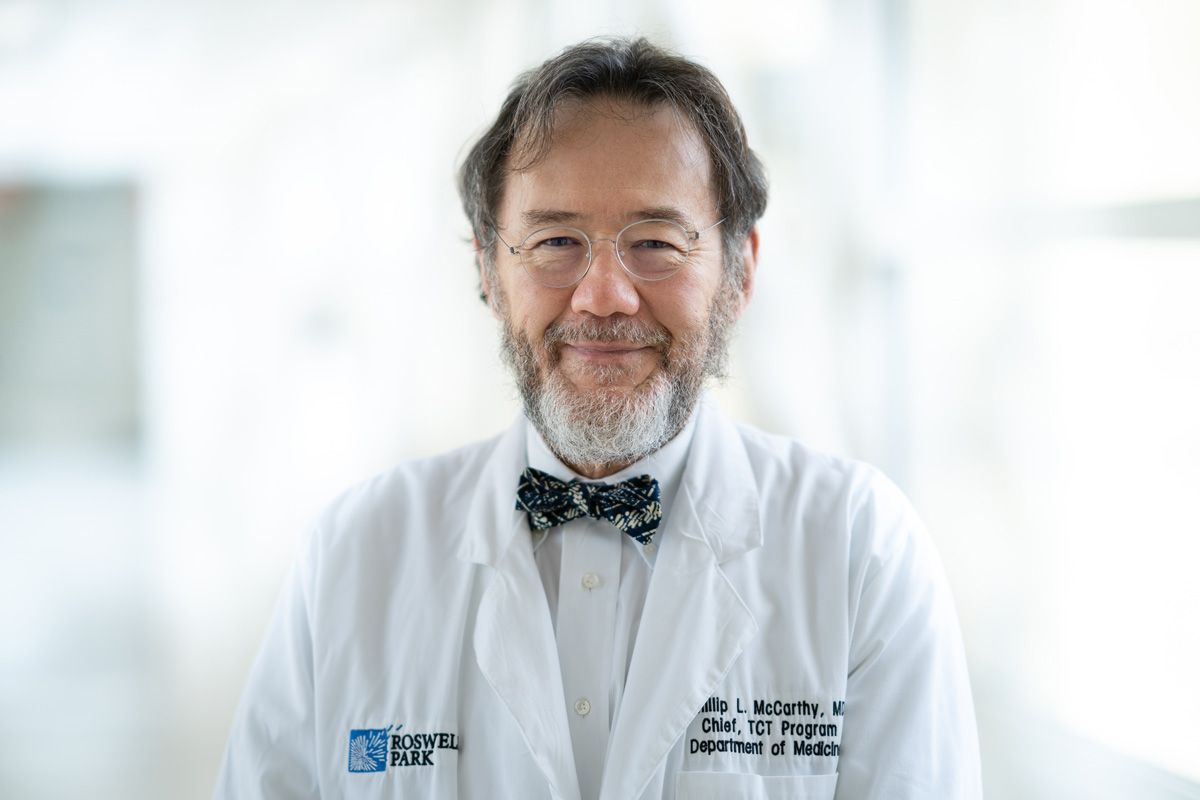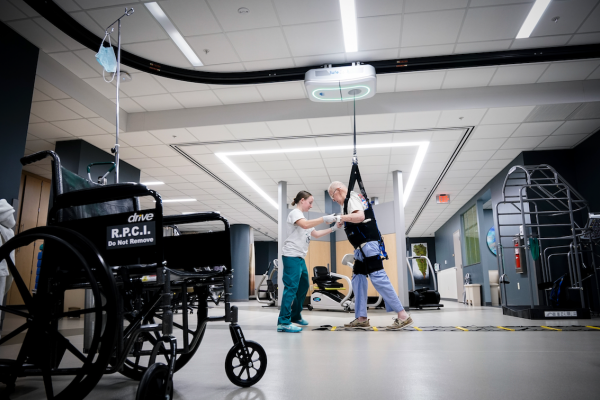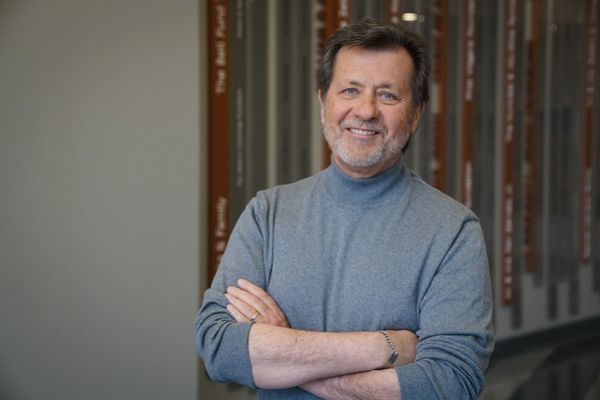Finding the “sweet spot” between treatment success and toxicity
Graft-versus-host disease (GvHD) is a serious complication that may occur after a patient undergoes a blood or organ transplant. At Roswell Park, patients may receive a transplant of stem cells from blood or bone marrow for treatment of blood cancers such as leukemia, lymphoma, myelodysplastic syndrome, myelofibrosis and other hematological disorders. GvHD can occur in 30% to 60% of patients in which the transplanted stem cells come from a donor, called an allogeneic transplant. The frequency depends on the type of donor and match as well as whether the patient is in remission or not. GvHD can range from mild to severe and life-threatening.
How It Happens
GvHD occurs because the transplanted cells (graft) also contain the donor’s T cells — strong immune cells that attack cells in the patient (host) that they detect as foreign. While a robust immune response is beneficial for fighting bacteria, viruses and cancer, these donor T cells can also view the normal healthy cells of the patient as foreign.
When the healthy cells are attacked, it can result in skin rashes, gastrointestinal disorders and liver problems soon after transplant; this is called acute GvHD. Chronic GvHD is usually defined as GvHD that begins after day 100 post-transplant. About 10% of patients experience severe GvHD. Interestingly, mild GVHD can be a good sign that the transplant will be more successful over the long term. Patients with acute and especially chronic GvHD, are least likely to see their cancer relapse, but we don’t have a spigot for the GvHD where we can shut it off before it becomes severe and threatens the patient’s life. We do have several strategies aimed at decreasing the incidence and severity of GvHD.
Treating GvHD
When GvHD arises, we tamp down on this over-active immune response with corticosteroids and other immune-suppressing drugs, topical steroid creams for skin rashes, and steroid drops for eye symptoms. However, the drugs also pose side effects, such as bone loss and fractures, and weakening the immune system in this way means that the patient faces increased risk for infection. Patients may receive bone-strengthening drugs, medicines to fight off infections and sometimes additional intravenous feeding to maintain strength.
At Roswell Park, we offer a technique called photopheresis for patients with chronic GvHD. In photopheresis, the patient’s white blood cells are collected, exposed to a light-sensitizing drug and treated with light therapy to dampen down the T cells, and are sent back into the patient.
In addition, several of our clinical trials are assessing how different approaches to transplant and post-transplant therapy affect the risk for GvHD, as well as new treatments for GvHD.
Never miss another Cancer Talk blog!
Sign up to receive our monthly Cancer Talk e-newsletter.
Sign up!Preventing GvHD
We face a difficult problem, because factors that decrease GvHD may also decrease the transplant’s anti-cancer effect. When a patient receives a transplant, we use medications to suppress the patient’s immune system to accept the graft, keeping the patient in remission and reducing GvHD. But if we suppress the immune system too much, it can increase the patient’s risk for cancer relapse and/or suffering a life-threatening infection. It’s like Goldilocks and the three bears. We are always trying to get it just right. After a transplant, if the patient remains in remission, we begin to reduce the immune-suppressing drugs, allowing the immune system to eliminate any small amount of cancer and treating GvHD if it emerges.
Donor selection is another example. You might think that an identical twin would be the perfect match for providing donor cells. When the transplant is from an identical twin, there’s no GvHD, but these patients are more likely to see their cancer relapse, as their donor cells don’t attack the underlying cancer. The sweet spot seems to be where we have a good tissue antigen match, but not a completely identical one.
One approach under study is what’s called a half match — for example, where the donor is a parent or a partially tissue-matched brother or sister. Each sibling has a 25% chance of a complete tissue match, a 50% chance of a half match, and a 25% chance of not matching at all. In the past, we would use only a fully tissue-matched donor, but now can use the half-matched sibling, parent or child, depending on the age of the donor and patient.
Research to improve approaches to half-matched transplantation and addressing GvHD is ongoing at Roswell Park. We are examining how to improve safety for transplants from a relative or an unrelated donor, as well as ways to identify which patients face greater risk for GvHD so we may control it better.



